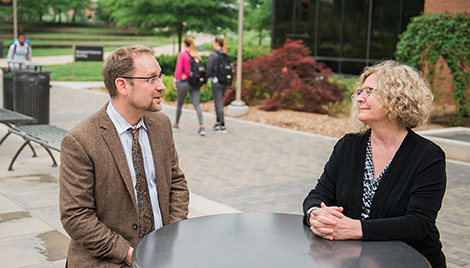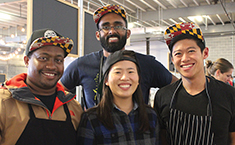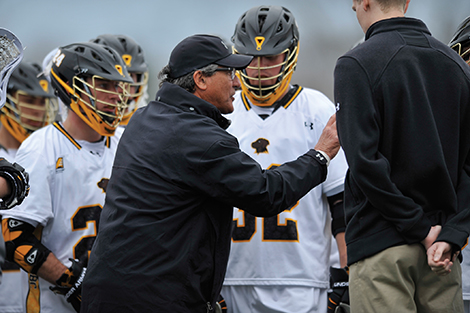Interdisciplinarity has always been part of the UMBC landscape. But where is it headed? UMBC Magazine asked Carole McCann – special assistant to the provost for interdisciplinary activities and a professor and chair of gender and women’s studies – and Stephen Freeland, director of UMBC’s interdisciplinary studies program, to address interdisciplinary work at UMBC today.
UMBC Magazine: UMBC seems to have interdisciplinarity in its bloodstream.
Carole McCann: I actually would say “and in its bones.” A number of units at our founding were structured to be interdisciplinary. As just one of many examples, American studies was one of UMBC’s foundational departments. It is also a department which nurtured gender and women’s studies, media and communications, and some aspects of global studies. We also have interdisciplinary studies – and before that, Option II – which offers students the opportunity to create their own majors. We’ve had multiple ways in which our campus has been able to identify and nurture emerging and interdisciplinary fields.
Stephen Freeland: The world is changing at such a rate that no matter what we carve out into a new program, there will always be students who are telling us what’s next. We embrace this idea of the individualized major, where the students sometimes tell us what’s out there next in terms of careers and graduate programs. And if you can design a degree that makes you competitive for that, we’ll buy into it.
UMBC Magazine: Are interdisciplinary collaborations pushing into the curriculum?
McCann: Oh, absolutely. We have students saying: “This is a thing and I need to do it.” And we also have faculty saying: “Hey, this is a thing and I want to do it.” One example is [associate professor of American studies] Nicole King and [associate professor of visual arts] Steve Bradley and their Mapping Baybrook project, where students in an American studies class do the work of cultural mapping and understanding the neighborhood, and students in a visual arts class do the graphic design work to create visual representation.
Freeland: You can also look at the work that biology is partnering with mathematics right now.
McCann: We all bring our work in because it’s what excites us. So we talk about it – and it does get into the curriculum. The gender and women’s studies department is built out of a faculty initiative to bring into the curriculum things that weren’t there before.
That is the exciting thing about interdisciplinarity. Working together – across ways of seeing the world – produces a new frame for understanding.
UMBC Magazine: Does having interdisciplinarity in our bones help us?
McCann: The thing about bones is they’re kind of hard. So, figuring out how to take a physical campus designed for the mid-20th century and turn it into a campus that has the flexibility to offer different configurations, both in terms of classrooms, but also in terms of course scheduling and credit bearing activities, that’s a challenge. One of the things that the Provost’s Task Force on Interdisciplinary Activities has focused on is: How do we do that?
Interdisciplinarity is the ground of innovation. To identify and solve real world problems, we need to have places that incubate innovative thinking, right? That’s what’s going on with interdisciplinary activities. We need to strengthen that across college divides.
Freeland: I also see a really deep, meaningful bridge here between interdisciplinarity and applied learning. Any real world problem is inherently interdisciplinary. It’s myopic to think: “Oh, that’s a biological question.” It’s got a sociological dimension, a philosophical dimension, an artistic dimension. Interdisciplinarity is a place where we’ll be able to meet employers and graduate schools more effectively. Professional organizations now want students to do projects, where you actually see a task through. You learn project management. You learn the sociology of teamwork. The MCAT has just changed to demand sociology. And they don’t mean just learn the right answers to sociology. They mean think about your patient as a person, not just a chemical system that needs fixing.
We also find that the employers of the biologists and the computer scientists who come to do a “safe degree” that leads to a job that their parents like are saying: “We wish they could write better, think critically better…. “
McCann: And read.
Freeland: Everything the humanities is trying to teach. This is, really, I think, nothing short of the 21st century educational mode. It has to be.
—Richard Byrne ’86
Tags: Summer 2016




